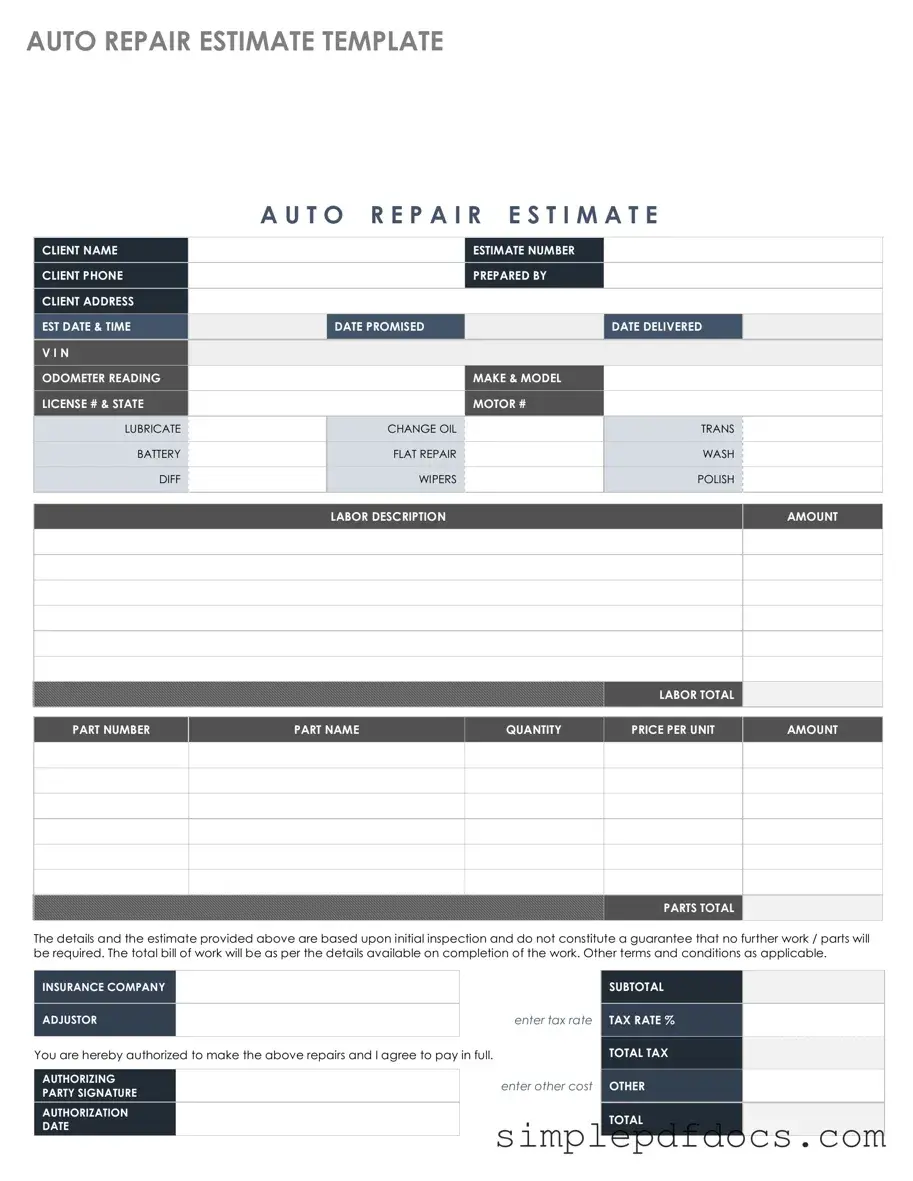Fill Your Auto Repair Estimate Form
The Auto Repair Estimate form is a document used by auto repair shops to provide customers with a detailed breakdown of expected costs for vehicle repairs. This form outlines the necessary services, parts, and labor, helping customers make informed decisions about their vehicle maintenance. Understanding this form is essential for both consumers and service providers, as it fosters transparency and trust in the repair process.
Get Document Here
